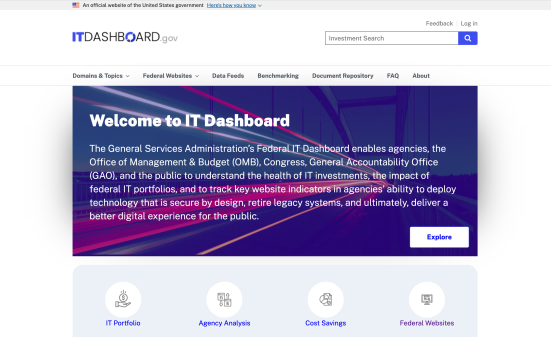Federal Data Service looks to borrow from success of agency dashboard projects

The under-development Federal Data Service is set to focus on accelerating agencies’ data maturity with dashboard projects, like those the U.S. Department of Agriculture has undertaken the past few years.
USDA developed more than 500 dashboards across its 29 agencies in the nearly three years since Ted Kaouk was named chief data officer, without any staff at first.
The enterprise analytics program is a testament to how quickly CDO shops can mature when they provide agency leaders with the best data available via dashboards, Kaouk said during a meeting of the Federal Advisory Committee on Data for Evidence Building on Friday.
“It was a real big culture change,” Kaouk said. “It was about making visible some of the data quality issues.”
Kaouk’s team and those of USDA’s eight assistant CDOs do that by providing confidence levels with each dataset.
Now the 25-member advisory committee is working to launch the Federal Data Service for improving how agencies access, link and protect data — at least initially through pilot projects.
And USDA and the Census Bureau could provide models for how agencies determine what data is fit to use in dashboards, said Dominic Mancini, acting federal chief statistician. The bureau’s “pulse” surveys and COVID-19 data hub, for instance, have proven quick ways to visualize general pandemic trends concerning households and small businesses despite added uncertainty in the data, Mancini said.
Dashboard projects don’t have to break the bank either. USDA invested a “modest” $2 million across 19 agencies to begin with, Kaouk said.
“Largely it was about consolidating resources we already had,” Kaouk said. “We had Tableau servers across multiple mission areas, and we were able to bring them into a common platform and I think in many cases actually save money as agencies were looking to move their own cloud platforms.”
USDA worked with five of the General Services Administration‘s Centers of Excellence — including the Data & Analytics CoE — which helped accelerate some of the dashboarding work and performed data maturity assessments, Kaouk said.
A question that remains unresolved is just how expansive the Federal Data Service’s scope will be. Will it be a federal service helping federal agencies stand up a lot of dashboards revealing potential efficiencies, or will that offering be extended to states and localities, asked Amy O’Hara, director of the Georgetown Federal Statistical Research Data Center.
“If we want this to be a national secure data service that supports the measurement needs of state and local, we’ve got to address this value proposition,” O’Hara said. “Are we thinking about resourcing this appropriately to achieve both of those goals?”






